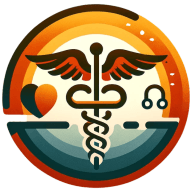Welcome to the digital age, where technology is revolutionizing every aspect of our lives, including healthcare. This post will delve into the world of telemedicine platforms, a groundbreaking tool for doctors. We'll explore what these platforms are, how they work, and why they are becoming an indispensable part of modern healthcare.
Understanding Telemedicine Platforms
Telemedicine platforms are digital tools that allow doctors to provide healthcare services remotely. They use technology to bridge the gap between healthcare providers and patients, eliminating the need for physical presence.
These platforms come equipped with a range of features designed to facilitate virtual consultations. They include video conferencing, instant messaging, electronic health records, and prescription management systems.
Doctors can use these platforms to diagnose, treat, and monitor patients from the comfort of their homes or offices. This convenience is one of the many reasons why telemedicine platforms are gaining popularity.
Telemedicine platforms are not just about convenience. They also have the potential to transform healthcare delivery. By enabling remote consultations, these platforms can extend the reach of healthcare services to underserved areas. They can also reduce the pressure on healthcare facilities and free up resources for more critical cases.
How Telemedicine Platforms Work
Telemedicine platforms leverage internet technology to facilitate virtual consultations. The process begins when a patient logs into the platform and requests a consultation. The platform then matches the patient with a suitable doctor based on the patient's symptoms and the doctor's specialty.
Once the match is made, the doctor and patient can communicate through video call, voice call, or instant messaging. The doctor can review the patient's symptoms, medical history, and any uploaded medical documents. After the consultation, the doctor can provide a diagnosis, prescribe medication, and recommend a treatment plan.
The platform also allows for follow-up consultations and continuous monitoring of the patient's condition. Some platforms even integrate with wearable devices that track vital signs, providing real-time data to the doctor.
Benefits of Telemedicine Platforms for Doctors
Telemedicine platforms offer numerous benefits for doctors. They provide flexibility, allowing doctors to consult with patients from anywhere at any time. This flexibility can lead to a better work-life balance and reduced burnout, which is a common problem in the healthcare industry.
Telemedicine platforms also increase efficiency. They eliminate the need for travel and reduce the time spent on administrative tasks. This means doctors can see more patients in less time, increasing their productivity and income.
Furthermore, telemedicine platforms can improve patient outcomes. They enable early intervention, continuous monitoring, and better management of chronic conditions. They also facilitate collaboration among healthcare professionals, leading to more comprehensive care.
Challenges and Solutions in Telemedicine
Despite their benefits, telemedicine platforms also present some challenges. These include technical issues, data security concerns, and regulatory hurdles. However, solutions are being developed to address these challenges.
Technical issues, such as poor internet connection and software glitches, can disrupt virtual consultations. To mitigate this, telemedicine platforms are improving their technology and offering technical support to users.
Data security is another concern. Telemedicine platforms handle sensitive health information, which must be protected from cyber threats. To ensure data security, platforms are implementing robust security measures, such as encryption and two-factor authentication.
Regulatory hurdles also pose a challenge. Telemedicine is a new field, and laws and regulations are still evolving. To navigate this, telemedicine platforms are working with legal experts and staying updated on regulatory changes.
The Future of Telemedicine Platforms
The future of telemedicine platforms looks promising. As technology advances, these platforms are expected to become more sophisticated and user-friendly. They will likely integrate with more health devices and offer more features, such as AI-powered diagnosis and treatment recommendations.
Telemedicine platforms are also expected to play a key role in managing the growing burden of chronic diseases. By enabling remote monitoring and management, these platforms can help keep chronic conditions under control and reduce hospitalizations.
Moreover, as the benefits of telemedicine become more apparent, it is likely that more doctors will adopt these platforms. This will further drive their development and innovation.
Choosing the Right Telemedicine Platform
With the growing number of telemedicine platforms, choosing the right one can be a challenge. Doctors should consider several factors, including the platform's features, ease of use, technical support, and compliance with regulations. They should also consider the platform's cost and the feedback from other users.
Doctors should choose a platform that meets their needs and those of their patients. They should also be open to trying out different platforms and switching if necessary. After all, the goal is to provide the best possible care to patients, and the right telemedicine platform can make that easier.
Embracing the Digital Revolution in Healthcare
Telemedicine platforms are revolutionizing healthcare, offering unprecedented convenience, efficiency, and reach. While they do present some challenges, the benefits they offer to doctors and patients alike are undeniable. As technology continues to advance, these platforms are set to play an increasingly important role in healthcare delivery. It's time for doctors to embrace this digital revolution and explore the potential of telemedicine platforms.

